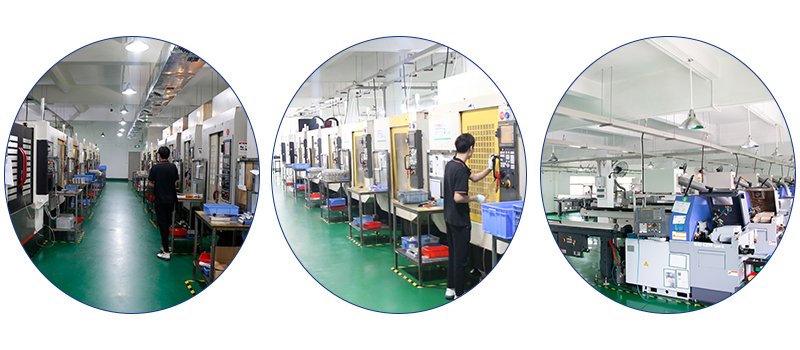In today’s fast-paced manufacturing world, companies often face a critical decision: how to choose the right production method for precision parts? If you’ve been grappling with this, you’re not alone. For high-volume production of precision parts, CNC machining consistently outperforms 3D printing. But why is CNC machining better suited for these projects? Let me break it down step-by-step based on my expertise and practical experience in the industry.
The Strength of CNC Machining in Precision Manufacturing
When producing components that demand tight tolerances and intricate details, CNC machining is king. With its subtractive process—where material is removed from a solid block—CNC machining ensures an unrivaled level of precision. In fact, CNC machining can achieve tolerances as tight as ±0.005 mm, making it perfect for applications in aerospace, automotive, and medical devices.
On the other hand, while 3D printing excels at creating complex geometries, its additive nature makes it prone to slight deviations. Have you ever noticed layer lines or rough edges on a 3D-printed part? These imperfections may be acceptable for prototypes, but not for high-performance parts where every micron counts.
Think about this: If you’re manufacturing hundreds or thousands of identical components, would you trust a process that’s susceptible to inconsistencies? CNC machining’s precision ensures every piece is identical, reducing rework and saving costs in the long run.
Efficiency and Speed: CNC Machining vs. 3D Printing
Time is money in manufacturing, and meeting tight deadlines can be challenging. CNC machining is often the faster choice for high-volume production. Once the program is set up and the tooling is prepared, CNC machines can operate at remarkable speeds. Some advanced machines can produce parts in a matter of minutes, scaling effortlessly for large batches.
In contrast, 3D printing’s layer-by-layer construction is inherently slower. The more intricate or larger the design, the longer it takes. Additionally, post-processing steps like support removal and surface finishing further extend production time. While 3D printing is a fantastic tool for rapid prototyping, it struggles to match CNC’s speed and scalability for mass production.
Have you ever been stuck waiting for a 3D printer’s marathon print job to finish, only to find it failed halfway? With CNC machining, these risks are minimal, ensuring that production deadlines are met consistently.
Material Versatility: Why CNC Machining Wins
One of CNC machining’s greatest advantages is its ability to work with a vast range of materials. From metals like aluminum, stainless steel, and titanium to engineering plastics like PEEK and Delrin, CNC machines handle it all. This versatility makes CNC machining the go-to method for applications requiring durability, heat resistance, or conductivity.
While 3D printing materials have come a long way, they’re still limited in comparison. Many 3D printing materials lack the mechanical properties required for demanding applications. For instance, 3D-printed parts often can’t withstand high stress, extreme temperatures, or corrosive environments.
Imagine this scenario: Your product needs a part that must endure years of mechanical stress and exposure to harsh conditions. Would you rely on a limited selection of 3D printing resins, or would you opt for CNC machining’s robust material options?
Surface Finish and Quality: A Clear Winner
When aesthetics and functionality matter, the surface finish of a part is crucial. CNC machining produces parts with smooth surfaces right out of the machine, often requiring minimal post-processing. Advanced techniques like polishing, anodizing, or powder coating can further enhance the appearance and performance of CNC-machined parts.
3D printing, however, usually requires significant post-processing to achieve a comparable finish. The layer-by-layer approach often leaves visible lines, which must be sanded or polished away. For high-volume manufacturing, this extra step adds time and cost.
Think about your customer’s expectations. If you’re delivering parts with a flawless finish, CNC machining delivers consistency without the need for labor-intensive touch-ups.
Cost-Effectiveness for Large Production Runs
Here’s where CNC machining truly shines: cost-efficiency for large-scale production. While 3D printing may have lower initial setup costs, its per-unit cost remains relatively high because of slower production speeds and material limitations. CNC machining, on the other hand, spreads its setup costs over thousands of units, drastically reducing the cost per part.
If your business needs high-quality parts at competitive prices, CNC machining is the obvious choice. Why settle for a method that’s economical only in the short term, when CNC machining can save you more as production scales?
Consistency and Reliability in Manufacturing
Reliability is non-negotiable in manufacturing. With CNC machining, you get repeatability and consistency, no matter the batch size. Modern CNC machines are equipped with advanced controls that ensure every part meets the same high standards.
3D printing, however, can be unpredictable. Variations in print quality, warping, or material inconsistencies are common challenges. For mission-critical parts where failure isn’t an option, CNC machining offers peace of mind.
Ask yourself this: Would you risk production delays or quality issues by relying on a less consistent method? For manufacturers with tight quality control requirements, CNC machining is the dependable choice.
YL-Machining: Your Trusted CNC Partner
At YL-Machining, we understand the challenges manufacturers face—tight deadlines, stringent quality standards, and cost pressures. That’s why we’ve honed our CNC machining processes to deliver precision parts on time, every time. From prototype to production, our team is here to provide solutions tailored to your needs.
Conclusion: CNC Machining vs. 3D Printing
While 3D printing is a fantastic tool for certain applications, it falls short when it comes to precision, scalability, and reliability for high-volume production. CNC machining consistently delivers the accuracy, efficiency, and cost-effectiveness that manufacturers demand.
So, the next time you’re evaluating production methods for your precision parts, consider this: Do you need prototypes or production-ready components? For the latter, CNC machining is the clear winner. If you’re ready to experience the benefits of CNC machining, contact YL-Machining today. Let’s turn your vision into reality with precision and reliability.






